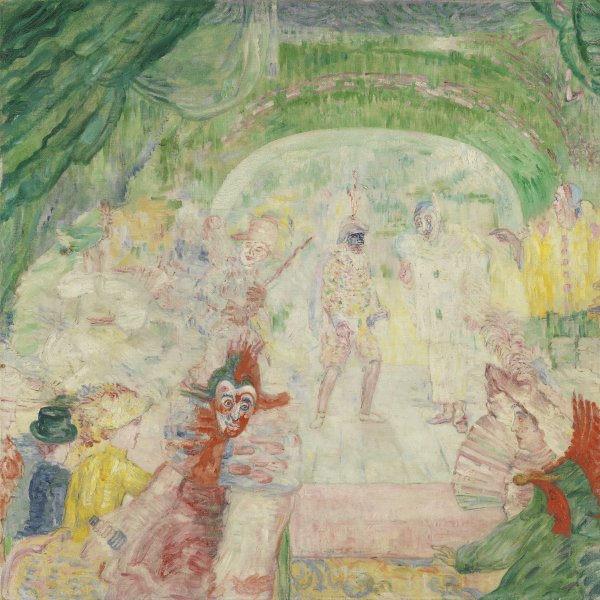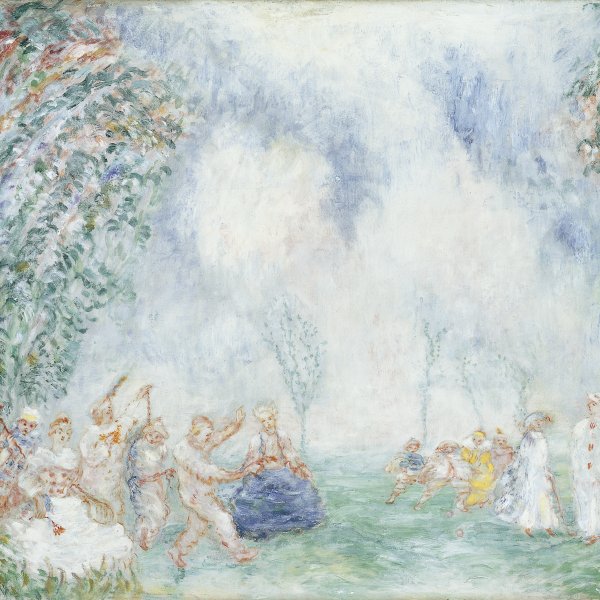James Ensor
Ostend, 1860-1949
The Belgian painter James Ensor is considered a forerunner of the Expressionist movements. His work, which depicts a world populated by grotesque people, was greatly admired by both the German Expressionists and the Surrealists. He spent his whole life in Ostend, his city of birth, except while training at the Académie Royale des Beaux-Arts in Brussels from 1877 to 1880. He started out painting urban landscapes, seascapes and interiors in a muted palette. However, colour and light gradually became increasingly important in his work, owing possibly to the influence of Impressionism. He is assumed to have travelled to London for the first time in 1887, where he must have seen the works of William Turner, which were decisive in informing his interest in light. In the 1880s his works began to be inhabited by strange beings, skeletons and masked figures, which were often a social satire. In parallel with this development, his range of themes was broadened by his fondness for selfportraiture and religious subjects, in which the figure of Christ was sometimes identified with the artist.
In 1883 Ensor was involved in establishing the group of The XX, which aimed to bring about a change in European art and introduced Post-Impressionism and Symbolism in Belgium. He collaborated with the group until it split up in 1894, despite his differences with other members such as the secretary Octave Maus. Later, until 1914, he took part in the exhibitions organised by La Libre Esthétique, which took over from The XX. Ensor’s fame became established at the turn of the century. He was appointed a knight of the Order of Leopold in 1903 and a monograph was published on his work in 1908.
Towards the end of his life, Ensor developed a keen interest in music. He composed a few pieces, created choreographies and collaborated in staging ballets.
In 1883 Ensor was involved in establishing the group of The XX, which aimed to bring about a change in European art and introduced Post-Impressionism and Symbolism in Belgium. He collaborated with the group until it split up in 1894, despite his differences with other members such as the secretary Octave Maus. Later, until 1914, he took part in the exhibitions organised by La Libre Esthétique, which took over from The XX. Ensor’s fame became established at the turn of the century. He was appointed a knight of the Order of Leopold in 1903 and a monograph was published on his work in 1908.
Towards the end of his life, Ensor developed a keen interest in music. He composed a few pieces, created choreographies and collaborated in staging ballets.






